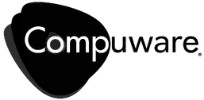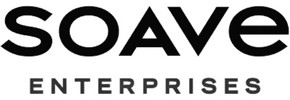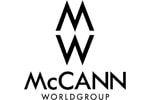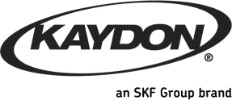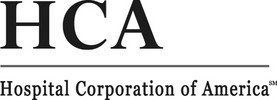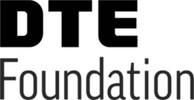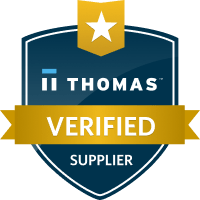
Most B2B companies spend heavily to attract visitors, then watch those visitors leave without taking action. CRO Strategies—short for Conversion Rate Optimization—focus on improving your website’s ability to turn existing traffic into leads, inquiries, or sales. If the term sounds technical, think of it as website visitor conversion or website lead generation. Just as SEO once sounded complex in the 1990s until it became mainstream, CRO today is simply about guiding qualified visitors to take the next step.
This article outlines practical CRO strategies for B2B organizations preparing for 2026. You’ll learn why CRO should come before more traffic, how data and behavior inform smart tests, where AI can accelerate results, and how design choices influence buyer confidence. The goal isn’t more clicks—it’s more revenue from the clicks you already have.
CRO Strategies: Turning Traffic Into Results
Marketers love growth curves, but traffic alone is a vanity metric if it doesn’t convert. A site with 10,000 visitors and a 0.5% conversion rate underperforms a site with 4,000 visitors at 2% conversion. CRO strategies focus on the latter—improving the yield of every session, visit, and page view. In B2B, where decision cycles are longer and buying committees are larger, even small gains in conversion compound across pipeline stages and sales velocity.
At SmartFinds Marketing, we approach CRO strategies as a system, not a one-off project. We combine analytics, user behavior, and experimentation with AI-driven insights and tested design patterns. The result is a website that doesn’t just inform—it performs. Before you invest in more traffic, it’s essential to capture more value from the traffic you already have.
Why CRO Strategies Matter for B2B Companies in 2026
B2B buyers self-educate longer than ever. By the time they speak with sales, they’ve read articles, compared vendors, and formed shortlists. Your website is the digital front door—and often the entire lobby, showroom, and briefing room. If that experience is confusing, slow, or light on proof, visitors leave and rarely return. CRO strategies align your site with how buyers actually evaluate risk, priority, and fit.
The economics are compelling. Boosting conversion by a single percentage point can outperform months of traffic acquisition. In our work, we’ve seen measurable gains by improving form clarity, streamlining navigation, elevating proof, and tailoring CTAs to intent. In one client engagement, improving conversion pathways and qualification criteria helped increase lead quality by 70%—without inflating media spend. CRO turns your website from a passive brochure into an active revenue engine.
The Foundation of CRO Strategies: Data, Behavior, and Testing
Effective CRO starts with data, not guesswork. Analytics reveal what is happening—bounce rates, exit pages, funnel drop-offs—while behavior tools show why it’s happening. Heatmaps surface where attention clusters, scroll tracking shows whether visitors reach key CTAs, session replays uncover friction in forms, and funnel analytics highlight which steps lose momentum. These signals point to specific hypotheses you can test.
- Analytics & funnels: Identify the pages and steps with the biggest revenue impact first.
- Behavior tools: Use heatmaps, scroll depth, and session recordings to see real user friction.
- Form analysis: Measure abandonment by field; reduce fields, add autofill, clarify microcopy.
- A/B & multivariate testing: Validate changes with statistically sound experiments.
Critical mindset: Before spending on ads or SEO to attract more visitors, make sure the visitors you already have are converting efficiently. That may mean improving messaging on your top landing pages, simplifying a bloated “Contact Sales” form, or adding stronger proof near high-intent CTAs. For deeper tactics on conversion mechanics, see our guide on how to improve your website conversion rate.
Closing thought: Data reduces debate. When your roadmap is grounded in measured behavior, you prioritize the highest-impact fixes and earn quick wins that build momentum.
AI and Automation: The New CRO Accelerator
AI dramatically accelerates CRO by analyzing behavior at scale, detecting patterns humans miss, and running continuous optimizations. Predictive models flag pages likely to underperform. AI-driven heatmaps infer attention from limited traffic. Personalization engines adapt hero copy, CTAs, or social proof based on segment intent. And AI agents orchestrate workflow—launching tests, monitoring results, and recommending next steps.
- Predictive insights: Surface high-friction areas before they erode pipeline.
- Adaptive experiences: Match messages, offers, and proof to visitor segment and stage.
- Automated testing: Queue tests, set guardrails, and iterate faster with AI assistance.
- AI workflows: Trigger alerts when conversion dips, form errors spike, or page speed degrades.
AI doesn’t replace strategy; it multiplies it. Human judgment still defines positioning, proof hierarchy, and brand guardrails. AI handles the heavy lifting—sifting data, prioritizing experiments, and personalizing at scale—so your team spends more time on creative and commercial decisions. To explore how we fuse AI with B2B programs beyond CRO, see our article on AI-Powered B2B Marketing.
Closing thought: The advantage isn’t AI alone—it’s the combination of AI speed and human insight. Together, they shorten feedback loops and lift conversion systematically.
Design and Psychology: Building Trust That Converts
Great CRO is equal parts engineering and empathy. Buyers convert when pages are easy to understand, easy to use, and easy to trust. That demands clarity (plain, specific language), visual hierarchy (one primary action per view), and proof (logos, testimonials, case results) placed where doubts peak. Every extra click, confusing label, or vague promise adds cognitive load—and reduces the odds of action.
- Message clarity: Replace slogans with outcomes. State who it’s for, what it does, and why it’s better.
- CTA intent match: Align CTAs to stage—“See Pricing,” “Get a Demo,” “Download Guide,” not one generic button everywhere.
- Trust signals: Place client logos, certifications, and quantified results near conversion zones.
- Form simplicity: Remove non-essential fields, add progress cues, and explain why data is needed.
- Visual hierarchy: Use space, contrast, and typography to guide attention to the next best step.
When in doubt, lower the commitment. Offer a resource, pre-drafted email, or calculator for early-stage visitors; ask for a demo or consultation when signals show higher intent. Cropping friction, not adding gimmicks, is what moves the needle.
Closing thought: Design is conversion strategy made visible. If a page isn’t converting, first fix the meaning and the flow—then the color of the button.
Case Example: Turning Traffic Into Revenue
One of the best demonstrations of how CRO strategies turn traffic into measurable business outcomes comes from our work with a global leader in Content Delivery Network (CDN) solutions. The company specialized in high-performance delivery for video, gaming, and software downloads but struggled to generate meaningful leads and online visibility despite being in business for over 20 years. Before partnering with SmartFinds Marketing, they ranked 12th to 14th out of 14 competitors in web performance metrics and had invested more than $1 million in a sales-first approach with minimal results.
SmartFinds implemented a complete marketing transformation that focused on conversion before traffic expansion. We rebuilt the digital foundation through a new website, AI-driven audience engagement, optimized calls-to-action, and multi-channel marketing that included SEO, content optimization, social media, press releases, and LinkedIn outreach. Continuous data-driven adjustments ensured every tactic aligned with measurable performance goals.
Key Highlights from the Case Study:
- Total Leads: 4,386 globally — including 1,009 from the U.S. (average 4.97/day) and 3,377 internationally (average 10.05/day).
- Year-over-Year Growth: 198% increase in global leads compared to the prior six months.
- U.S. Market Growth: Lead volume rose 94%, from 2.56/day to 4.97/day.
- Lead Quality: Improved by 70% through CRO refinements and better targeting.
- Cost Efficiency: Cost per qualified lead decreased by 35% within six months.
Beyond metrics, the client saw major qualitative gains—enhanced brand visibility, improved sales alignment, and stronger credibility in both U.S. and global markets. This project proved that optimizing existing traffic and conversion pathways drives faster ROI than chasing new visitors alone.
You can read the full story in our B2B Lead Quality Case Study or download the detailed report here (PDF).
Closing thought: You don’t have to outspend competitors if you outconvert them. CRO compounds the value of every channel you already fund.
Continuous Optimization: CRO Strategies as a Long-Term Strategy
CRO is not a launch-and-leave project. Markets shift, pages evolve, and buyer expectations rise. Treat CRO like a product discipline: maintain a backlog of hypotheses, schedule recurring audits, and review performance quarterly. Fold in insights from SEO (what brings visitors), GEO (how AI surfaces answers), and sales feedback (which leads close). The goal is a durable system that keeps improving yield with every iteration.
- Quarterly audits: Re-assess speed, accessibility, message-market fit, and proof placement.
- Test cadence: Run a blend of quick wins (copy, CTA, placement) and deeper tests (layouts, flows).
- Metrics that matter: Optimize for demo requests, qualified form fills, pipeline contribution—not just clicks.
- Cross-functional loops: Share web insights with sales and product; bring sales objections back into copy and proof.
Benchmarks can provide helpful context, but your baseline—and your trajectory—matter most. The winners in 2026 will be those who continuously align site experience with buyer reality and double down on what proves out. (For general reference, you can review widely cited conversion benchmarks from HubSpot.)
Closing thought: CRO is a culture, not a campaign. Organizations that learn faster convert more—consistently.
SmartFinds Perspective: From Website Visitors to Qualified Leads
If your site is attracting visitors but not producing qualified conversations, don’t rush to buy more traffic. Start by making the most of the traffic you already have. Define success clearly (demo requests, consultations, high-intent downloads). Remove friction where it’s highest. Put proof where doubts peak. Personalize outcomes to the visitor’s context. Then, once the system performs, scale traffic with confidence—knowing each new visitor is far more likely to become a lead or a customer.
At SmartFinds Marketing, we combine data, design, and AI to build conversion systems that compound over time. If you’re ready to turn website traffic into revenue—and do it efficiently—let’s talk. Connect with me, Melih Oztalay, on LinkedIn to start mapping your CRO roadmap for 2026.
Schedule a Discovery Call Now
Author: Melih Oztalay




